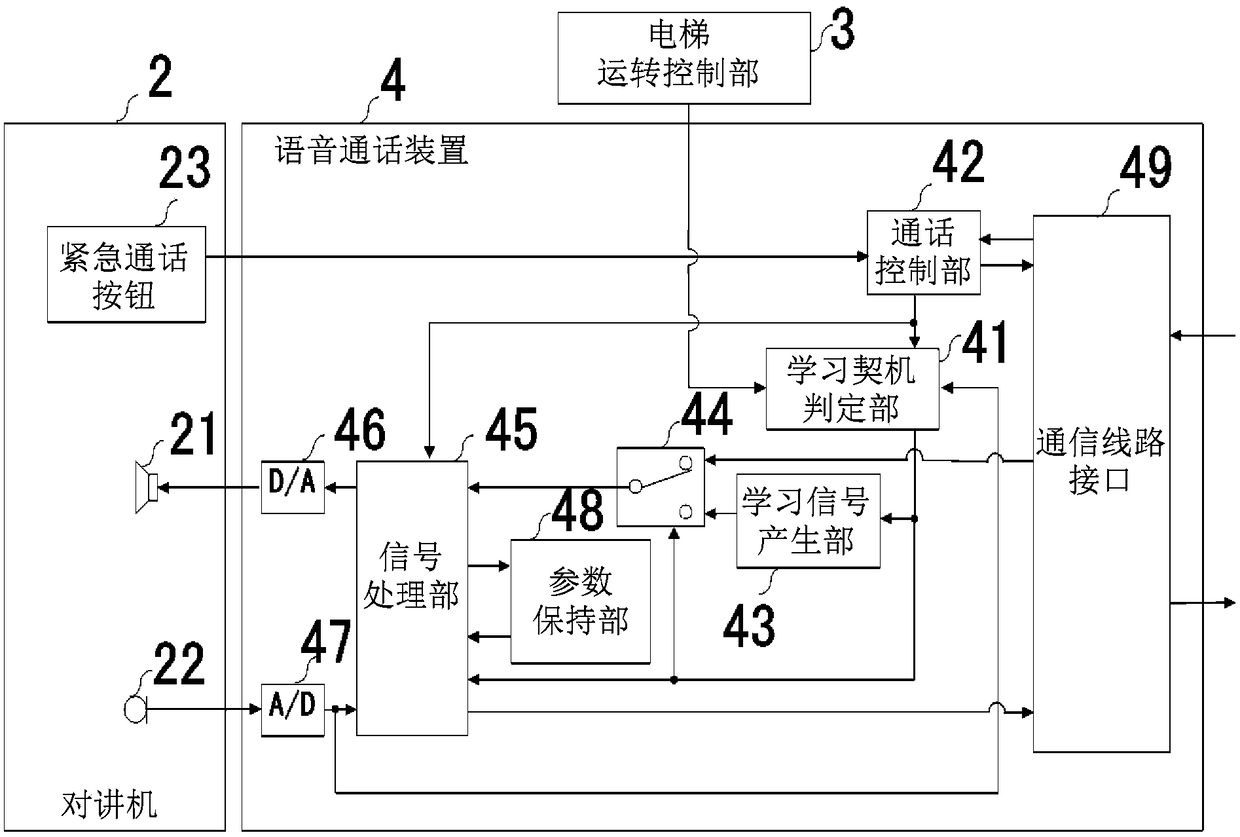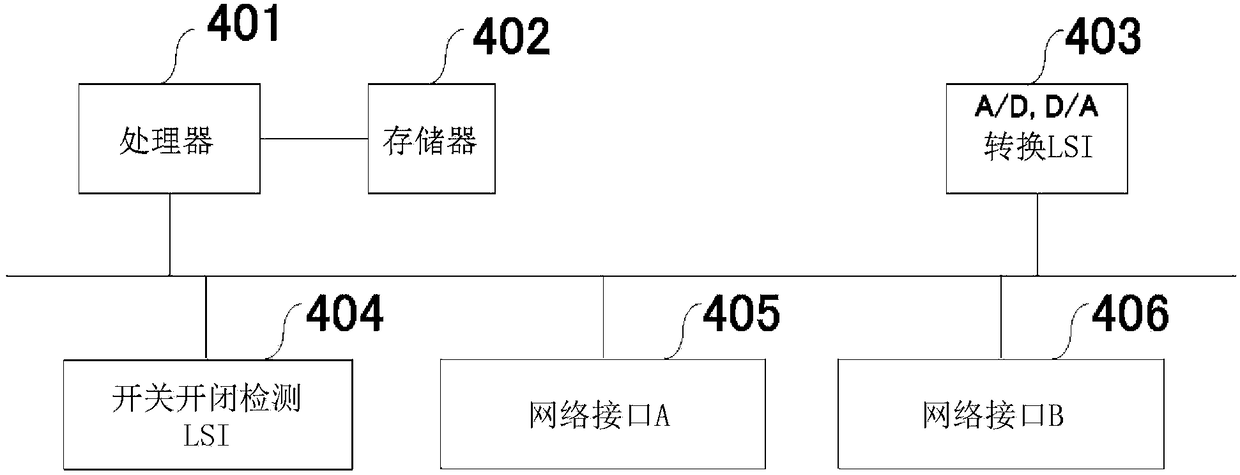Voice communication device
A technology for voice calls and elevators, used in interconnection devices, branch office voice amplifiers, telephone communications, etc., and can solve problems such as proper timing of initial learning
- Summary
- Abstract
- Description
- Claims
- Application Information
AI Technical Summary
Problems solved by technology
Method used
Image
Examples
Embodiment approach 1
[0027] The voice communication device according to Embodiment 1 of the present invention will be described. figure 1 It is a block diagram of an elevator emergency reporting system using the voice communication device of the present invention. In the figure, 1 is an elevator, 2 is an intercom installed in the elevator 1, 3 is an elevator operation control part that controls the operation of the elevator 1, 4 is a voice communication device, 5 is a communication network, and 6 is a communication network for the elevator 1. The destination monitoring center, 7 is a telephone terminal in the monitoring center 6 .
[0028] For example, when the elevator 1 breaks down and passengers are locked in the elevator 1 , this system is used to call the operator of the monitoring center 6 and make a call. At this time, the walkie-talkie 2 is used for the voice input and output of the person who is locked in the elevator 1, and the voice communication device 4 performs mutual conversion bet...
Embodiment approach 2
[0056] In Embodiment 1, the learning opportunity determination unit 41 is based on Figure 6 The shown flow determines whether it is time to perform initial learning. Specifically, based on the button press information from the elevator operation control unit 3, it is determined that there is no passenger in the elevator 1 based on the condition (ST16) that a predetermined time has elapsed since the last button in the elevator 1 was pressed, that is, initial learning. time. On the other hand, in this embodiment, the structure which judges that there is no passenger in the elevator 1 by another means is shown.
[0057] In the elevator 1, there is an elevator having a buzzer notifying of overload. In such an elevator 1 , the elevator operation control unit 3 can output the weight information in the elevator 1 to the learning opportunity determination unit 41 . The learning opportunity judging unit 41 uses this information for judging the initial learning time. Figure 8 The ...
Embodiment approach 3
[0061] In this embodiment, the structure which judges the condition that there is no passenger in the elevator 1 from the camera image is shown. There is also an elevator that enables not only voice communication but also image communication during the call.
[0062] Figure 9 The flow of the learning opportunity judging unit 41 judging the initial learning time is shown. In this flow, instead of the condition that a predetermined time or more has elapsed since the last button in elevator 1 was pressed, the condition that there is no one in the camera image (ST22) is used in the judgment, and the other is the same as Figure 6 Same process.
[0063] As described above, according to the invention of the present embodiment, the learning opportunity judging unit 41 judges that there is no one in the camera image, thereby judging that there is no passenger, and judging whether or not initial learning can be performed. According to this configuration, similarly to Embodiments 1 ...
PUM
 Login to View More
Login to View More Abstract
Description
Claims
Application Information
 Login to View More
Login to View More - R&D
- Intellectual Property
- Life Sciences
- Materials
- Tech Scout
- Unparalleled Data Quality
- Higher Quality Content
- 60% Fewer Hallucinations
Browse by: Latest US Patents, China's latest patents, Technical Efficacy Thesaurus, Application Domain, Technology Topic, Popular Technical Reports.
© 2025 PatSnap. All rights reserved.Legal|Privacy policy|Modern Slavery Act Transparency Statement|Sitemap|About US| Contact US: help@patsnap.com



